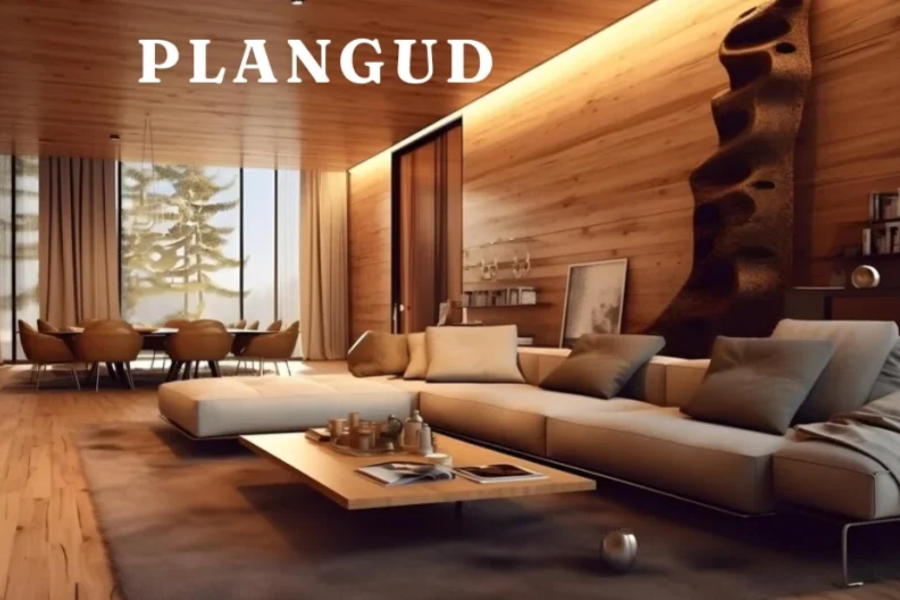The selection of materials is important in interior design, carpentry, and building. Plangud is a highly adaptable and dependable solution among the many that are offered. This word describes hardwood planks, a necessary material valued for its adaptability, strength, and beauty. We will examine the traits, varieties, applications, and advantages of Plangud in this thorough guide, giving you all the knowledge you require to decide on your projects wisely.
What are Plangud?
Wooden planks, also known as plangud, are flat pieces of wood used in interior design, carpentry, and construction. Oak, debris, pine, and a great many different woods can be utilized to make these boards. Plangud’s quality, size, and finish can vary greatly based on their intended use. Plangud is a popular material for a wide range of building and decorative applications because of their durability, adaptability, and aesthetic appeal.
Types of Plangud
1. Dried Oak and Ash Planks
Dimensions: These planks typically have thicknesses of 50 to 60 millimeters, lengths of up to 3000 millimeters, and widths of 200 to 400 millimeters. Additionally, custom sizes up to 800 mm in width can be ordered.
Grades for Quality: Grades AB and ABC typically indicate quality and the presence of defects or knots.
Applications: They are ideal for high-quality furniture, flooring, and decorative elements due to their durability and rich appearance.
2. Hand-Hewn Planks
Handscraped planks are meticulously handled by hand to preserve their organic, rustic appearance. Every plank has an own texture and look thanks to this age-old technique.
Dimensions: The width of these planks starts at 100 mm and goes up to 5000 mm in length.
Uses: Ideal for crafting distinctive features for interior design, like accent walls, rustic furniture, and wall panels.
3. Untreated and Rough-Sawn Planks
Dimensions: Generally offered in 45 mm thicknesses, with a range of width options between 150 and 300 mm.
Quality Grades: With an AB grade, these planks are suitable for use in heavy-duty building projects including wood window sills, staircases, and furniture.
Custom Finishing: Options for planing and smoothing are available upon request, providing flexibility for various applications.
Applications of Plangud
1. Construction and Carpentry
Plangud are widely used in construction and carpentry due to their strength and versatility. They can be used in building frameworks, flooring, and creating custom furniture pieces. Plangud are appropriate for both structural and ornamental uses due to their durability.
2. Interior and Exterior Design
In interior design, Plangud are used for wall paneling, creating unique feature walls, and crafting custom furniture. Hand-hewn planks, with their rustic charm, are particularly popular for adding character to interiors. For exterior applications, Plangud are used in cladding, decking, and creating outdoor furniture, providing a natural and weather-resistant finish.
3. Furniture Making
Plangud is a sturdy and aesthetically pleasing material that is perfect for building furniture. For a dependable and aesthetically beautiful material, Plangud provides dining tables, bookshelves, and bed frames. Every piece of furniture is guaranteed to be distinct and suited to a particular set of requirements thanks to the option to alter the planks’ size and finish.
Benefits of Using Plangud
1. Durability
The strength and durability of plangud, particularly those made from hardwoods like oak and ash, are well-known. Because of their ability to endure extreme use and mileage, they are a well known decision for both brightening and primary applications.
2. Aesthetic Appeal
Any place is made more elegant and cozy by the inherent beauty of wood. Plangud can be finished in a variety of methods to improve their appearance, including as hand-hewn textures or smooth, polished surfaces. This adaptability permits artistic freedom in ornamentation and design.
3. Versatility
Plangud can be used for a lot of different things, like construction and furniture making and designing interiors and exteriors. Their versatility makes them a significant material in different tasks, giving both useful and enriching benefits.
4. Sustainability
Wood can be replenished provided it is sourced ethically. Construction and design projects have less of an impact on the environment when Plangud is sourced sustainably. Furthermore, wood emits less carbon dioxide into the atmosphere than steel and concrete, two other common building materials.
Customization and Ordering
Plangud should be purchased with your project’s specific requirements in mind. Planks can be customized to your exact needs by ordering from a number of providers. Bulk purchases are cost-effective for larger projects since they frequently come with savings. Making ensuring the wood comes from sustainable forests is also crucial if you want to help with environmental preservation.
Conclusion
Plangud are a fundamental material in construction and woodworking, offering numerous benefits such as durability, aesthetic appeal, versatility, and sustainability. Whether you are building a new structure, crafting furniture, or designing an interior space, understanding the types and applications of Plangud will help you make informed decisions for your projects. Plangud are a vital resource in both traditional and modern construction and architecture due to its vast range of uses and adjustable alternatives.
By exploring the various types, benefits, and applications of Plangud, this guide provides a comprehensive overview that highlights their importance and versatility. Whether for practical construction needs or creative design projects, Plangud offer a reliable and attractive solution that stands the test of time.
